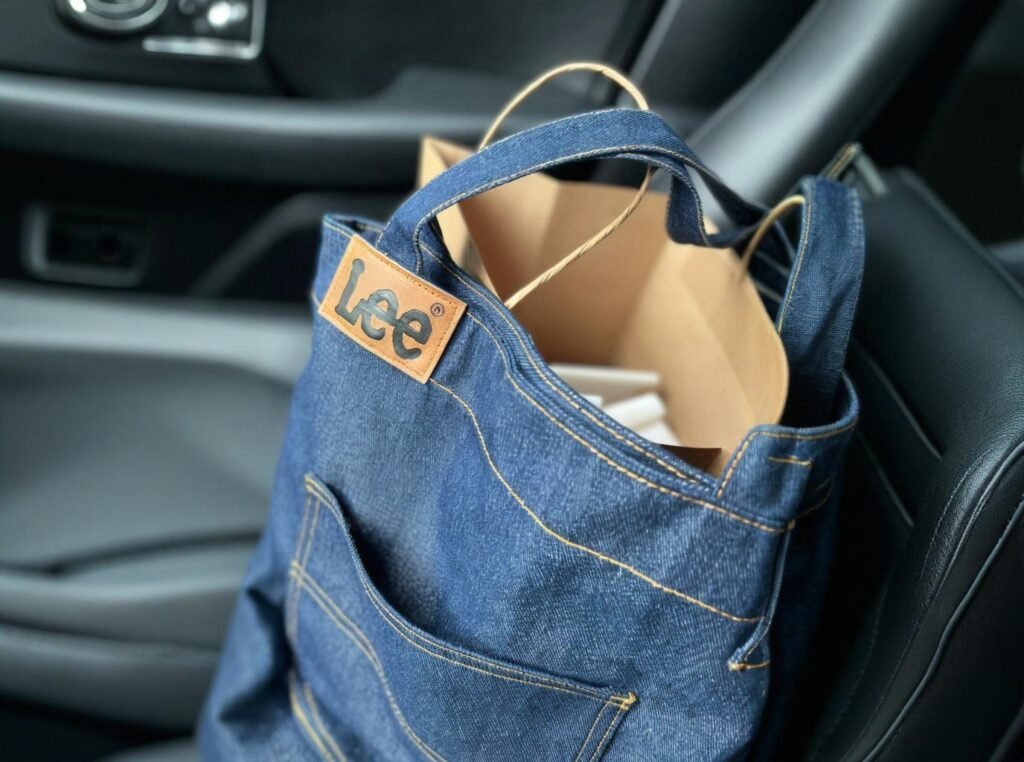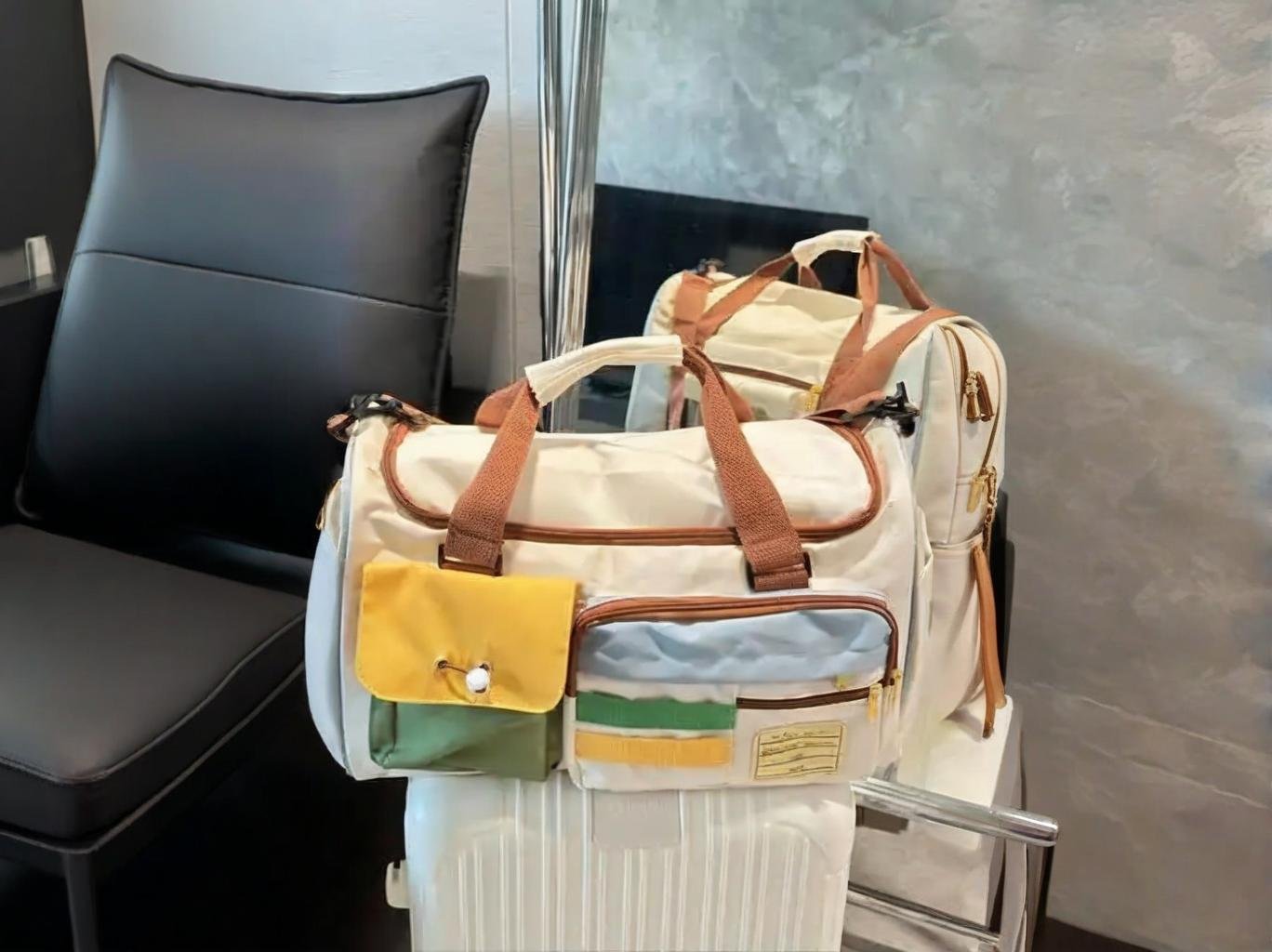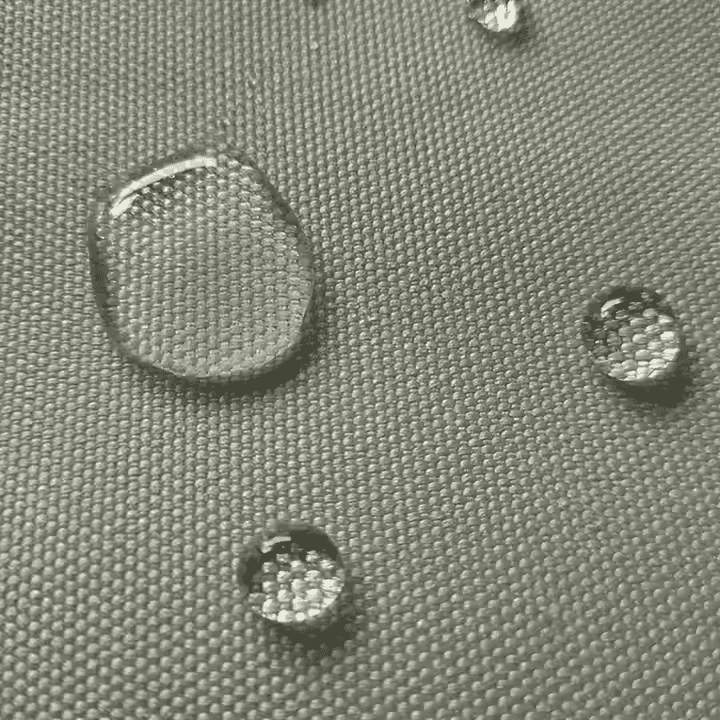Should Denim Be 100% Cotton?

Few fabrics have stood the test of time like denim. Once synonymous with rugged workwear, it has evolved into a canvas for couture designers, sustainable startups, and global fast-fashion giants alike. But in the face of stretch trends, recycled blends, and performance denim, a timeless question resurfaces among designers and sourcing teams: Should denim still be made from 100% cotton?
100% cotton denim is still prized for its breathability, natural strength, vintage aesthetic, and eco-recyclability — but today’s market often favors cotton blends for comfort, stretch, and shape retention. Whether pure cotton is the right choice depends on product goals, user experience, and environmental values.
With more brands seeking to reduce synthetics and cater to circular fashion demands, understanding the pros and cons of 100% cotton denim — versus elastane or polyester blends — is essential for sourcing the right fabric. The answer isn’t black or white. It’s woven through function, fit, and fashion.
In 2023, a UK-based boutique brand replaced their 98% cotton + 2% elastane denim line with rigid 100% cotton. Their return rate for sizing dropped by 12%, and repeat purchases increased 18% within six months — proving that for the right audience, authenticity wins over stretch.
1. What Are the Traditional Benefits of 100% Cotton Denim?
100% cotton denim offers unmatched durability, breathability, and a natural ability to mold to the wearer’s body over time — qualities that create long-lasting garments with character.
Why Cotton Denim Became the Standard
● Natural Comfort and Skin-Friendliness
Cotton is a cellulose-based fiber, meaning it’s breathable, hypoallergenic, and comfortable even for long wear.
- No static issues, unlike synthetic blends
- Moisture-wicking for better summer wearability
- Ideal for sensitive-skin or minimalist brands
● High Durability for Workwear and Rigid Fashion
- Strong tensile strength (especially when ring-spun)
- Tolerates heavy abrasion and frequent washing
- Preferred for heritage jeans, raw denim, and selvedge products
| Feature | 100% Cotton Denim | Cotton-Blend Denim |
|---|---|---|
| Abrasion Resistance | High | Medium |
| Fade Character | Deep, authentic | Less pronounced |
| Recyclability | High (mono-material) | Lower (mixed fibers) |
| Biodegradability | Fully | Partially |
● Iconic Fade and Aging
Unblended cotton denim creates “honeycomb,” “whisker,” and “stack” fades over time — part of what gives raw denim its cult following.
Brands like Levi’s LVC, A.P.C., and 3sixteen build entire lines around rigid 100% cotton jeans, often commanding higher price points due to the lived-in, personalized fading process.
● Easy to Repair and Recycle
Because it’s mono-material, 100% cotton denim is:
- Easier to patch and mend (important for repair-focused brands)
- Accepted in textile recycling streams without chemical breakdown
If your brand values longevity, authenticity, and circularity — pure cotton is still the gold standard in denim manufacturing.
2. How Does 100% Cotton Denim Compare to Stretch or Blended Options?
Compared to stretch or cotton-blend denim, 100% cotton denim offers better durability and aging, while blends deliver improved comfort, flexibility, and fit retention — particularly in slim or body-conscious styles.
Performance Trade-Offs Between Pure and Blended Denim
● Comfort and Fit: Stretch Wins
- Adding 1–3% elastane or spandex increases stretch and recovery
- Beneficial for:
- Skinny and slim-fit jeans
- Jeggings or active denim
- Maternity and adaptive wear
| Denim Composition | Stretch (%) | Fit Recovery | Comfort Rating |
|---|---|---|---|
| 100% Cotton | 0% | None | Firm, rigid |
| 98% Cotton / 2% Lycra | \~15% | Medium | Moderate soft |
| 92% Cotton / 8% Elastane | \~30% | High | Maximum comfort |
● Shape Retention and Return Rates
- Stretch denim bounces back after washing, reducing “bagging” at knees or seat
- Apparel brands often see lower return rates with stretch fabrics due to better fit range across body types
A U.S. fast-fashion label reduced size-related returns by 22% after switching from 100% cotton denim to a 99% cotton / 1% elastane blend in their women’s line.
● Fabric Behavior Over Time
| Metric | 100% Cotton Denim | Cotton-Blend Denim |
|---|---|---|
| Fade Evolution | Strong, high-contrast | Softer, muted |
| Shape Memory | Low | High (with Lycra) |
| Aging Appeal | Increases | Plateaus after washes |
| Wash Sensitivity | Shrinks (if untreated) | More stable |
● Environmental Considerations
- Blended fabrics are harder to recycle
- Elastane/Spandex is non-biodegradable
- 100% cotton aligns better with circular economy strategies
If your denim targets fit-first consumers, stretch is essential. But for authentic, vintage-inspired products, 100% cotton offers unmatched visual and tactile depth.
3. Is Pure Cotton Denim More Durable Than Blends Over Time?
Yes, 100% cotton denim is generally more durable over time than cotton blends, especially under heavy use, repeated wash cycles, and abrasion stress — making it ideal for workwear, selvedge denim, and vintage-inspired garments.
Why Durability Matters in Denim Investment
● Fiber Structure and Break Strength
- Cotton fibers have high tensile strength and can withstand prolonged friction.
- In contrast, spandex and elastane degrade faster due to fiber fatigue and heat sensitivity.
| Test Type | 100% Cotton Denim | Cotton + Elastane Blend |
|---|---|---|
| Martindale Abrasion (cycles to failure) | 40,000+ | 20,000–25,000 |
| Tear Strength (N) | High | Medium |
| Stretch Fatigue | None (no stretch) | High (loses elasticity) |
(Source: Intertek Testing Reports, 2023)
● Thermal and Washing Resistance
100% cotton:
- Can withstand higher wash temperatures
- Shows natural shrinking, but maintains structure
- Develops fade patina, not fabric pilling
Blends:
- Sensitive to hot water and heat drying
- Elastane can break down after 30+ washes
- Weaker at seams when overstretched
● Real-World Example:
Workwear brands like Carhartt and Dickies still rely on 100% cotton duck and denim for their highest-durability lines. Despite a growing athleisure market, pure cotton holds the benchmark for long-term wear in heavy-duty use.
If your product lifecycle is long-term, or if your brand ethos is about product longevity and repairability, 100% cotton gives you fewer failure points and greater aging resilience.
4. Do 100% Cotton Jeans Offer Better Sustainability for Fashion Brands?
Yes, 100% cotton jeans — especially those made from organic or BCI-certified fibers — are generally more sustainable due to recyclability, biodegradability, and ease of lifecycle management compared to blended or stretch denims.
Sustainability Starts with Fiber Choice
● Mono-Material = Easier Recycling
- 100% cotton is easily separated, re-spun, and upcycled
- Mechanical recycling methods don’t require chemical separation
- Accepted into closed-loop recycling systems
In contrast:
- Cotton-elastane or polyester blends require chemical separation
- Many recycling centers reject stretch fabrics due to contamination risk
| Fabric Type | Recyclability | Biodegradability | Preferred in Circular Fashion? |
|---|---|---|---|
| 100% Organic Cotton | ✅ High | ✅ Yes | ✅ |
| 99% Cotton / 1% Elastane | ⚠️ Medium | ❌ No | ⚠️ Partial |
| 70% Cotton / 30% Poly | ❌ Low | ❌ No | ❌ |
● Certifications That Support 100% Cotton
Buyers looking to ensure transparency should request:
- GOTS (Global Organic Textile Standard)
- BCI (Better Cotton Initiative)
- OEKO-TEX® Standard 100 (for chemical safety)
A Swedish denim brand transitioned to 100% GOTS-certified cotton for their 2022 line. They cut chemical processing costs by 12%, partnered with a local recycling firm for take-back programs, and achieved 75% product recyclability — a 4x improvement over their stretch denim line.
● Water Use Considerations
- While conventional cotton is water-intensive, regen-agricultural cotton is becoming more widely available
- Blended fabrics reduce water slightly, but increase chemical dye fixatives and microplastic shedding
For brands pursuing LCAs (life cycle assessments) or ESG reporting, 100% cotton denim provides simpler documentation and a cleaner path toward circular production models.
5. What Types of Denim Applications Require 100% Cotton?
100% cotton denim is best suited for applications where durability, rigid structure, and natural fading are desired — such as workwear, raw denim, selvedge jeans, vintage reproductions, and premium fashion collections.
Where 100% Cotton Denim Truly Excels
● Workwear and Utility Garments
- Strong tensile performance
- Excellent resistance to tearing and abrasion
- Easier to patch and repair over time
Examples:
- Carhartt’s double-knee jeans
- Dickies original work pants
- Industrial-grade denim aprons or tool belts
● Raw and Selvedge Denim Markets
- Typically unwashed, allowing the wearer to customize fades over time
- Selvedge is traditionally woven on shuttle looms using 100% cotton warp and weft yarns
Brands:
- A.P.C. Petit Standard
- Iron Heart 21oz denim
- 3sixteen SL series
| Product Type | 100% Cotton Use Case |
|---|---|
| Raw Denim | For authentic aging + personalized fades |
| Heritage Styles | Reproductions of pre-1980s fits |
| Custom Garments | Ideal for rigid fit development |
| Artisan Brands | “Made-to-fade” storytelling lines |
● Luxury or Niche Denim Labels
These brands focus on:
- Natural textures
- Fabric provenance
- Heritage authenticity
If your brand narrative emphasizes “slow fashion,” “natural materials,” or “vintage wash authenticity,” 100% cotton adds storytelling value.
6. Are There Performance Limitations to Using Only Cotton in Denim?
Yes. 100% cotton denim has performance limitations, particularly in comfort, stretchability, and shape retention — making it less ideal for tight-fitting, movement-heavy, or stretch-reliant apparel categories.
When Cotton Alone Isn’t Enough
● Limited Flexibility
- No mechanical stretch unless special weaves are used (e.g., broken twill)
- Uncomfortable for:
- Skinny jeans
- Jeggings
- Athleisure hybrids
| Challenge | Result in 100% Cotton Denim |
|---|---|
| No Stretch | Restricts movement |
| Long Break-In Period | May discourage repeat purchase |
| Shape Deformation | Can “bag out” in knees or seat over time |
| Shrinkage Risk | Without sanforization, up to 10% shrink |
● Shrinkage and Fit Inconsistency
- Raw cotton denim can shrink unpredictably unless pre-shrunk
- Post-wash measurements may vary by up to 2 inches
Common Mitigation Techniques:
- Sanforization: Pre-shrinking process to stabilize fabric
- Mercerization: Improves strength and dye uptake, but not stretch
● Not Ideal for Performance-Demanding Use Cases
Applications where stretch denim is preferred:
- Commuter jeans with cycling function
- Kids’ wear (growth flexibility)
- Adaptive clothing
- Curve-accommodating fashion lines
A global retailer found that women’s size 27–32 jeans had a 26% return rate in rigid 100% cotton versus 11% in stretch denim due to fit dissatisfaction.
● Environmental Trade-Offs
While pure cotton is recyclable, the farming side still has high water input, especially in non-organic cotton production. So while fiber-end performance is cleaner, overall LCA may still need assessment.
100% cotton is excellent for heritage, rigid, and environmentally simplified products — but for ergonomic, diverse-body-friendly denim, modern blends have clear advantages.
7. Which Fabrics Are Commonly Blended with Cotton in Modern Denim?
Modern denim is often blended with elastane, polyester, TENCEL™, or recycled synthetic fibers to enhance stretch, moisture management, and durability — especially in fashion-forward or technical applications.
The Most Common Cotton Blend Partners in Denim
● Elastane / Spandex (1–3%)
- Most common for stretch denim
- Adds up to 30% elasticity
- Improves fit retention and recovery
- Not biodegradable or recyclable on its own
| Blend Example | Use Case |
|---|---|
| 98% Cotton / 2% Lycra® | Stretch jeans, women’s fits |
| 99% Cotton / 1% Spandex | Slim men’s jeans, skinny fits |
● Polyester (Up to 30%)
- Adds durability and wrinkle resistance
- Less fade-friendly than cotton
- Often found in fast fashion jeans
| Common Ratio | Purpose |
|---|---|
| 70% Cotton / 28% Poly / 2% Spandex | Fast fashion, budget jeans |
● TENCEL™ / Modal™ (10–30%)
- Softens hand feel
- Increases drape and breathability
- Derived from wood pulp (semi-synthetic, biodegradable)
Popular in eco-luxury or comfort denim categories
● Recycled Polyester or Elastomultiester (REPREVE®, Lycra T400®)
- Adds stretch without sagging
- Compatible with performance denim
- Can be recycled with special processes
Levi’s Flex line uses Cotton + Lycra T400® + recycled poly for enhanced movement with reduced bagging — particularly useful for commuter and athletic denim.
● Hemp, Linen, or Bamboo (Emerging Blends)
- Increasing use for eco-conscious fashion
- Adds breathability and natural texture
- Often combined with cotton at 20–50%
| Fiber Added | Function in Denim | Typical % Blended |
|---|---|---|
| Hemp | Strength, moisture wicking | 30–45% |
| Linen | Texture, breathability | 20–30% |
| Bamboo Viscose | Softness, drape | 10–25% |
Blends with natural fibers (like hemp) may be compostable if synthetics are avoided.
8. How Should B2B Buyers Choose Between 100% Cotton and Cotton Blends?
B2B buyers should choose based on end-use application, target customer preference, price tolerance, sustainability goals, and after-care expectations — with both 100% cotton and blends offering unique benefits and limitations.
The Sourcing Decision Framework
● Start With Buyer Profile
| Target Segment | Recommended Fabric |
|---|---|
| Heritage & Raw Denim | 100% Cotton (12–16oz) |
| Stretch-Comfort Fashion | 98/2 Cotton-Elastane Blend |
| Eco-Conscious Consumers | 100% Organic Cotton or Hemp |
| Active Denim Markets | TENCEL™ or Poly-Cotton Blends |
● Evaluate Product Goals
- Durability → 100% cotton or cotton-poly
- Stretch/fit → Cotton-elastane blends
- Sustainability → GOTS cotton, hemp blends
- Softness → Modal or TENCEL™ infusions
● Check Certifications
For both cotton and blends, request:
- GOTS (organic, 100% cotton)
- OEKO-TEX® (chemical safety)
- GRS / RCS (recycled input)
- LCA reports for full environmental impact
● Ask for Lab Tests
Request the following to compare samples:
- GSM (weight per square meter)
- Dimensional stability (shrink test)
- Stretch & recovery (% residual elongation)
- Abrasion and pilling resistance
- Colorfastness and crocking score
● Real Buyer Scenario:
A Canadian workwear startup tested both 100% cotton and 98/2 cotton-stretch for a dual-gender collection. Their findings:
- Cotton-stretch reduced size returns by 19%
- 100% cotton increased brand loyalty among male buyers by 27% They decided to carry both — stretch for fitted items, and rigid for utility-focused SKUs.
Should Denim Be 100% Cotton?
It depends — and that’s the honest answer.
- If your brand values longevity, recyclability, authentic fading, and heritage, then yes — 100% cotton denim still reigns supreme.
- If your buyers prioritize comfort, stretch, size inclusivity, and wrinkle resistance, blends offer unmatched flexibility.
In the evolving denim industry, there’s room for both. The best decision is the one aligned with your customer, price point, and sustainability commitments.
Partner with SzoneierFabrics
At SzoneierFabrics, we help brands and manufacturers source both:
- High-quality 100% cotton denim
- Eco-certified cotton-stretch blends
- Custom yarns and finishes tailored to your market needs
With:
- Free sampling
- Low MOQ customization
- Rapid development and lead times
- GOTS, OEKO-TEX®, and BCI-certified fabrics
Ready to develop your next denim collection? Contact SzoneierFabrics today and let’s create fabric that fits — your customers and your brand.
Can't find the answers?
No worries, please contact us and we will answer all the questions you have during the whole process of bag customization.
Make A Sample First?
If you have your own artwork, logo design files, or just an idea,please provide details about your project requirements, including preferred fabric, color, and customization options,we’re excited to assist you in bringing your bespoke bag designs to life through our sample production process.



